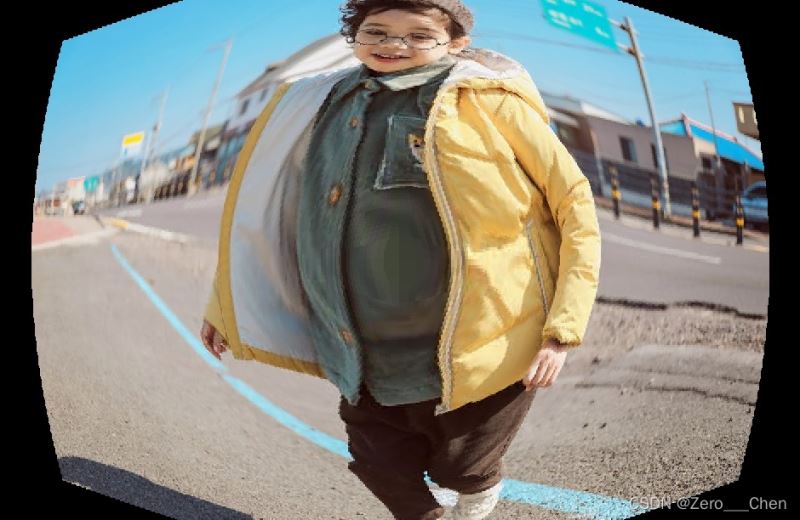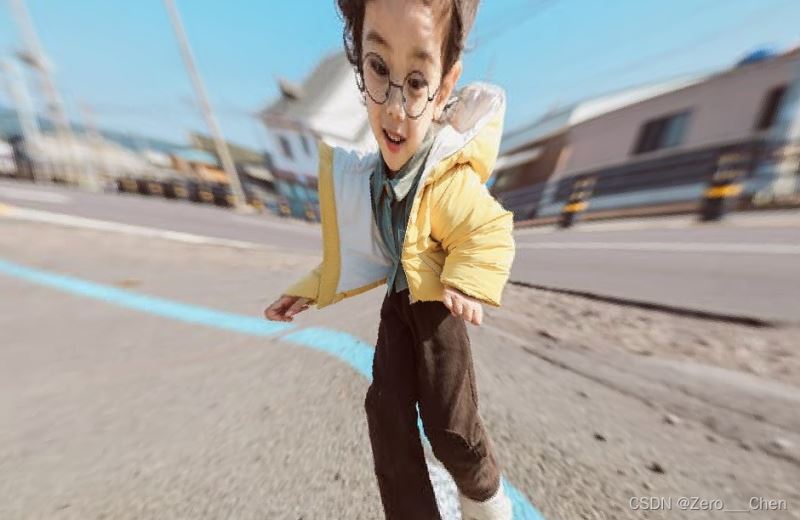这篇文章主要介绍了c++中怎么使用OpenCV制作哈哈镜图像效果的相关知识,内容详细易懂,操作简单快捷,具有一定借鉴价值,相信大家阅读完这篇C++中怎么使用OpenCV制作哈哈镜图像效果文章都会有所收获,下面我们一起来看看吧。一、凸透镜制作
这篇文章主要介绍了c++中怎么使用OpenCV制作哈哈镜图像效果的相关知识,内容详细易懂,操作简单快捷,具有一定借鉴价值,相信大家阅读完这篇C++中怎么使用OpenCV制作哈哈镜图像效果文章都会有所收获,下面我们一起来看看吧。

制作凸透镜效果(将图像放大)。根据网上查找的变换公式:
图像放大:凸透镜
x = (dx / 2)*(sqrt(pow(dx, 2) + pow(dy, 2)) / r) + cx;
y = (dy / 2)*(sqrt(pow(dx, 2) + pow(dy, 2)) / r) + cy;
请查看源码注释
bool Mirror_Magnify(Mat src){Mat canvas = Mat::zeros(src.size(), src.type()); //画布,重新生成哈哈图像//图像中心int cx = src.cols / 2;int cy = src.rows / 2;//决定哈哈镜大小int radius = 200; //图像像素修改for (int i = 0; i < src.rows; i++){for (int j = 0; j < src.cols; j++){//任意像素点到图像中心距离int dx = j - cx;int dy = i - cy;//重新映射像素点位置int x = (dx / 2)*(sqrt(pow(dx, 2) + pow(dy, 2)) / radius) + cx;int y = (dy / 2)*(sqrt(pow(dx, 2) + pow(dy, 2)) / radius) + cy;for (int c = 0; c < 3; c++){//防止越界if ((x > 0 && x < src.cols) && (y > 0 && y < src.rows)){canvas.at<Vec3b>(i, j)[c] = src.at<Vec3b>(y, x)[c];}}}}imshow("Mirror_Magnify", canvas);return true;}
制作凹透镜效果(将图像缩小)。根据网上查找的变换公式:
图像缩小:凹透镜
x = sqrt(sqrt(pow(dx, 2) + pow(dy, 2))) * compress * cos(atan2(dy, dx)) + cx;
y = sqrt(sqrt(pow(dx, 2) + pow(dy, 2))) * compress * sin(atan2(dy, dx)) + cy;
请查看源码注释
bool Mirror_Narrow(Mat src){Mat canvas = Mat::zeros(src.size(), src.type());//画布,重新生成哈哈图像int compress = 12; //压缩强度//图像中心int cx = src.cols / 2;int cy = src.rows / 2;//图像像素修改for (int i = 0; i < src.rows; i++){for (int j = 0; j < src.cols; j++){//任意像素点到图像中心距离int dx = j - cx;int dy = i - cy;//重新映射像素点位置int x = sqrt(sqrt(pow(dx, 2) + pow(dy, 2))) * compress * cos(atan2(dy, dx)) + cx;int y = sqrt(sqrt(pow(dx, 2) + pow(dy, 2))) * compress * sin(atan2(dy, dx)) + cy;for (int c = 0; c < 3; c++){//防止越界if ((x > 0 && x < src.cols) && (y > 0 && y < src.rows)){canvas.at<Vec3b>(i, j)[c] = src.at<Vec3b>(y, x)[c];}}}}imshow("Mirror_Narrow", canvas);return true;}
#include<iOStream>#include<opencv2/opencv.hpp>using namespace std;using namespace cv;bool Mirror_Magnify(Mat src){Mat canvas = Mat::zeros(src.size(), src.type()); //画布,重新生成哈哈图像//图像中心int cx = src.cols / 2;int cy = src.rows / 2;//决定哈哈镜大小int radius = 200; //图像像素修改for (int i = 0; i < src.rows; i++){for (int j = 0; j < src.cols; j++){//任意像素点到图像中心距离int dx = j - cx;int dy = i - cy;//重新映射像素点位置int x = (dx / 2)*(sqrt(pow(dx, 2) + pow(dy, 2)) / radius) + cx;int y = (dy / 2)*(sqrt(pow(dx, 2) + pow(dy, 2)) / radius) + cy;for (int c = 0; c < 3; c++){//防止越界if ((x > 0 && x < src.cols) && (y > 0 && y < src.rows)){canvas.at<Vec3b>(i, j)[c] = src.at<Vec3b>(y, x)[c];}}}}imshow("Mirror_Magnify", canvas);return true;}bool Mirror_Narrow(Mat src){Mat canvas = Mat::zeros(src.size(), src.type());//画布,重新生成哈哈图像int compress = 12; //压缩强度//图像中心int cx = src.cols / 2;int cy = src.rows / 2;//图像像素修改for (int i = 0; i < src.rows; i++){for (int j = 0; j < src.cols; j++){//任意像素点到图像中心距离int dx = j - cx;int dy = i - cy;//重新映射像素点位置int x = sqrt(sqrt(pow(dx, 2) + pow(dy, 2))) * compress * cos(atan2(dy, dx)) + cx;int y = sqrt(sqrt(pow(dx, 2) + pow(dy, 2))) * compress * sin(atan2(dy, dx)) + cy;for (int c = 0; c < 3; c++){//防止越界if ((x > 0 && x < src.cols) && (y > 0 && y < src.rows)){canvas.at<Vec3b>(i, j)[c] = src.at<Vec3b>(y, x)[c];}}}}imshow("Mirror_Narrow", canvas);return true;}int main(){Mat src = imread("test.jpg");if (src.empty()){cout << "No Image!" << endl;system("pause");return -1;}Mirror_Magnify(src);Mirror_Narrow(src);imshow("test", src);waiTKEy(0);system("pause");;return 0;}关于“C++中怎么使用OpenCV制作哈哈镜图像效果”这篇文章的内容就介绍到这里,感谢各位的阅读!相信大家对“C++中怎么使用OpenCV制作哈哈镜图像效果”知识都有一定的了解,大家如果还想学习更多知识,欢迎关注编程网其他教程频道。
--结束END--
本文标题: C++中怎么使用OpenCV制作哈哈镜图像效果
本文链接: https://lsjlt.com/news/306777.html(转载时请注明来源链接)
有问题或投稿请发送至: 邮箱/279061341@qq.com QQ/279061341
2024-03-01
2024-03-01
2024-02-29
2024-02-29
2024-02-29
2024-02-29
2024-02-29
2024-02-29
2024-02-29
2024-02-29
回答
回答
回答
回答
回答
回答
回答
回答
回答
回答
0